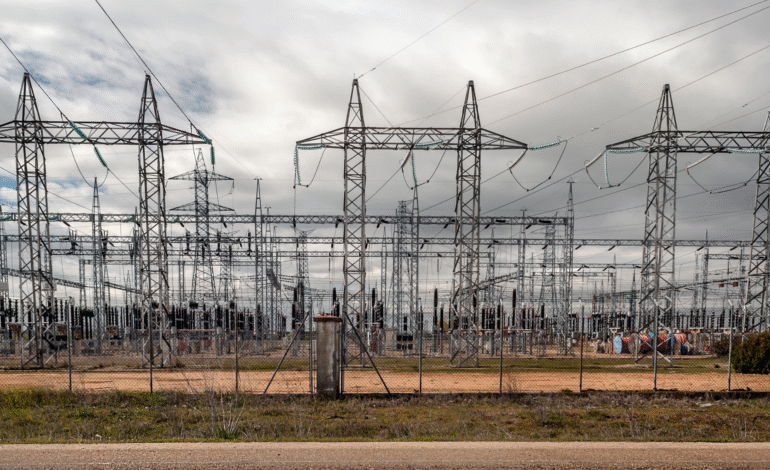India Sets Record in Renewable Energy Growth FY25

India has reached a remarkable milestone in its renewable energy journey, achieving a record 29.5 gigawatts (GW) of new renewable energy capacity in fiscal year 2025 (FY25). This achievement marks a key step in the country’s ambitious energy transformation, underlining its growing commitment to sustainable energy. With this addition, India’s total renewable energy capacity now stands at a robust 220.1 GW. The growth in this sector is not only a testament to India’s renewable energy potential but also sets the foundation for meeting its goal of 500 GW of clean energy by 2030.
A Record-Breaking Year for Renewable Energy
According to the Central Electricity Authority (CEA), the total renewable energy capacity added during FY25 was 34,054 megawatts (MW), with renewable energy accounting for a significant portion of this. Among the renewable sources, solar energy has contributed the most, adding 23.83 GW to the nation’s grid, an increase from the previous year’s 15.03 GW. Solar energy, with its immense potential in India, has clearly established itself as the key driver of the renewable energy revolution.
Wind power also made significant strides, with an addition of 4.15 GW, bringing the total wind energy capacity to 50.04 GW. Additionally, bioenergy and small hydro projects added considerable capacity to the grid. The shift towards renewable sources is aligning with the broader goal of reducing reliance on fossil fuels and mitigating environmental impact, contributing to a greener, more sustainable energy future.
Solar Energy: Leading the Way
India’s solar energy sector continues to be the star performer in its renewable energy portfolio. The country now has an installed solar capacity of 105.65 GW, which includes a mix of ground-mounted systems (81.01 GW), rooftop solar systems (17.02 GW), hybrid projects (2.87 GW), and off-grid systems (4.74 GW). The significant leap in solar power generation is largely driven by policy support, rapid technological advancements, and a favorable investment climate.
The addition of 23.83 GW of solar power capacity in FY25 represents a crucial step towards India’s goal of reaching 500 GW of renewable energy capacity by 2030. With abundant sunlight throughout the country, solar energy remains a vital part of India’s future energy plans. The focus on scaling up solar installations is expected to reduce the overall cost of energy, improve energy access, and help India meet its sustainability targets.
Wind Power: Gaining Momentum
Wind power, while not as dominant as solar, continues to play an important role in India’s renewable energy strategy. The addition of 4.15 GW of wind power in FY25 signifies an ongoing effort to diversify India’s renewable energy mix. With a total installed wind capacity of 50.04 GW, wind energy is expected to complement solar power, providing a more reliable energy source as part of a hybrid system.
The increase in wind energy capacity is encouraging, as the country looks to make full use of its wind corridors. However, much like solar power, wind energy also faces challenges related to intermittency. The combination of solar and wind, especially in hybrid systems, is seen as the most effective way to provide stable, renewable energy throughout the day and night.
Energy Storage: Critical to Future Growth
One of the significant challenges India faces as it scales up its renewable energy capacity is ensuring a stable and reliable energy supply. Renewable energy sources such as solar and wind are intermittent; they depend on weather conditions and time of day, which can make managing the grid more complex. To address this issue, India has placed a strong emphasis on energy storage systems, particularly pumped hydro storage.
In FY25, India took a significant step by approving a record number of six hydro pumped storage projects (PSPs) with a combined capacity of 7.5 GW. These projects are expected to play a crucial role in balancing supply and demand. They will store excess energy generated during peak renewable energy periods and release it during times when energy production is lower.
Energy storage is crucial to ensuring grid reliability, and the development of these projects marks a key milestone in India’s long-term energy strategy. By investing in advanced storage solutions, India is securing the future of its renewable energy infrastructure, ensuring it can handle growing demand while maintaining stability.
Hybrid Power Systems: A Strategic Shift
Hybrid power systems, which combine solar and wind energy, have gained attention as a solution to the intermittency issue. India has made significant strides in implementing hybrid systems, with over 65.29 GW of hybrid projects already in the pipeline. These systems, which combine multiple renewable energy sources, offer a more reliable and consistent power supply, helping to stabilize the grid.
In addition to solar and wind hybrids, India is also focusing on round-the-clock (RTC) power, peaking power systems, and thermal plus renewable energy (RE) bundling projects. This shift towards hybrid solutions reflects India’s strategic approach to ensuring that renewable energy is not just a short-term solution, but a long-term, scalable answer to its growing energy needs.
India’s Path to a Clean Energy Future
India’s renewable energy achievements are part of its broader vision to transition to a low-carbon economy. The country is on track to achieve its goal of 500 GW of renewable energy capacity by 2030, with significant investments being made in infrastructure and technology. In addition to the ongoing projects, India has 169.4 GW of renewable energy projects under implementation and 65.06 GW already tendered.
As part of its ongoing efforts to expand its clean energy footprint, India has committed to augmenting its non-fossil fuel-based installed electricity generation capacity to over 500,000 MW by 2031-32. The government’s $109.5 billion plan to enhance power infrastructure is expected to boost the country’s capacity to meet the projected demand of 458 GW by 2032. This will ensure that India’s energy supply remains robust and sustainable for decades to come.
Reducing Energy Shortages and Meeting Demand
A significant achievement in FY25 was India’s ability to meet an all-time maximum power demand of 250 GW. This accomplishment was made possible by the addition of renewable energy, along with upgrades in both generation and transmission capacities. As a result, energy shortages at the national level have reduced to a mere 0.1% in FY25, a vast improvement from 4.2% in FY14.
The country’s ability to meet such high energy demands with a growing share of renewable energy reflects the success of its energy policies and investments. It also demonstrates that India is well on its way to achieving energy security and sustainability, despite the challenges that come with integrating renewable energy sources.
Investment Opportunities and Future Outlook
India’s renewable energy sector presents significant investment opportunities for both domestic and international stakeholders. According to the India Brand Equity Foundation (IBEF), the country’s power sector is expected to present an investment opportunity worth $461.95 billion over the next decade. This investment will be driven by the growing demand for energy, infrastructure upgrades, and the ongoing transition to clean energy.
With the Indian government’s commitment to transitioning to renewable energy, there is a clear roadmap for sustained growth in the sector. Investments in clean energy technologies, energy storage, and grid infrastructure are expected to continue rising as the country moves towards its renewable energy goals.
A Bright Future for India’s Renewable Energy
India’s achievements in renewable energy capacity are a clear demonstration of its commitment to a greener, more sustainable future. With impressive strides in solar, wind, and hybrid power, the country is setting itself up for a clean energy revolution. The integration of advanced energy storage solutions, continued investments in infrastructure, and strategic shifts towards hybrid power systems will ensure that India remains a global leader in renewable energy for years to come.
India’s renewable energy journey not only addresses the growing energy needs of its population but also contributes significantly to global efforts to combat climate change. As the country continues to make bold strides in its energy transition, it offers a model for other nations to follow, balancing the need for economic growth with the imperative of environmental sustainability.







